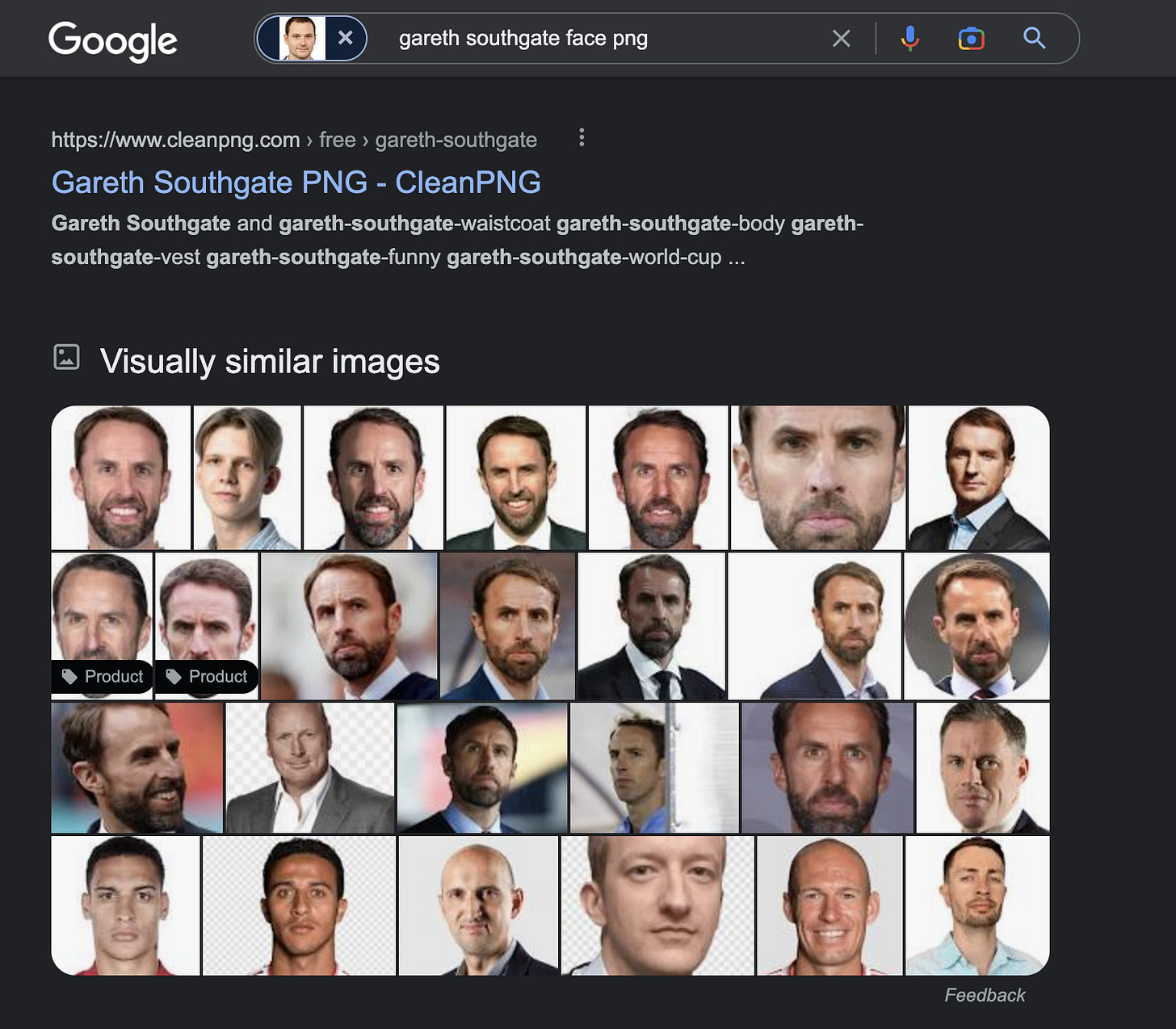Welp, at the end of last year, I was part of a large round of US layoffs at my agency. Even if they tell you it’s strictly financial and nothing related to performance, it’s still takes a hit to the ego.
Rather than grind myself to a pulp finding the next gig during the holidays, I took the opportunity to slow down, pause, and enjoy the time off. It was a godsend. I did have some conversations with various recruiters and agencies, but I didn’t really hit it hard. (I am now actively looking for my next gig in the advertising/creative/PR/social agency world as a Strategy Director IN CASE YOU’RE LOOKING FOR SOMEBODY).
As a result, I’m spending more time on LinkedIn. Networking, sourcing opportunities, etc. It’s entirely possible to spend whole-ass days on LinkedIn, messaging, connecting, applying. Rinsing and repeating. Because it’s true, you never know where your next opportunity might come from. So many people have been genuinely helpful in this process! Building and strengthening your network is most likely to yield a positive outcome versus straight cold applying to things.
I review every LinkedIn connection request. I’m not interesting enough or important enough to be inundated with connections—and I haven’t tried to be a LinkedInFluencer (yuck!)—so it’s relatively easy.
Enter: Phil Bell.
What might have been an innocuous connection request from someone I didn’t recognize turned into an investigation that had the potential to unearth the underbelly of our geopolitical order.
Let’s dig in.
The first curiosity: Phil’s company
This man named Phil Bell, who sent the connection request, identified himself as employee of a company called “Host Marriott Corp.” Right off the bat, I wasn’t familiar with Host Marriott Corp. but it sounded legit. Maybe the holding company or corporate parent for all of the Marriott hotels? Was this someone from the hotel giant wanting to hire me? Is it even worth looking into it—randos send LinkedIn requests all the time, after all.
Like, this was the moment: right here. I can just ignore it and move on.
But I couldn’t brush aside the curiosity.
So, I went to Google for verification: let’s make sure the company is real.
The first result is a press release from Marriott International, Inc. about the resolution of litigation involving Host Marriott Corp. So, OK, that’s kind of legit, insofar as Host Marriott Corp. is or was a real entity.
But wait! It’s from February of 2000. TWO THOUSAND! Looking at the date of the stories/results on the first page, you see: 1995, 2002, 1995, 2005, 2008, 2006. In other words, whatever this entity is hasn’t been active lately, if it exists at all anymore.
My mind raced. My first thought, naturally was: is Phil Bell a member of Obama/Biden’s Deep State trying to keep tabs on me? A Russian influence campaign? China’s next American surveillance effort? Hell, maybe I’m thinking too small-time here: this could be the tip of the iceberg of a 3-way collab between the Democratic party, Russia, and China designed to keep Trump out of the White House in 2024. But wait: wouldn’t Russia rather have Trump in office? This is some 5D chess. But what do these global and domestic powers, as a unified front, want?
Everything seemed on the table.
What about that profile photo?
Phil’s profile photo seemed so generic that it was borderline parody.
I uploaded Phil Bell’s incredibly generic profile photo and did a reverse image search and nothing of value came up, except that Google suggested that the photo might be related to Gareth Southgate, coach of England’s soccer team. But I mean, look at him. A generic, Anglo white dude you could possibly create. Garth Southgate was born in Watford, Hertfordshire and attended school in Cowplain, Hampshire and then went to Hazelwick School in Crawley, West Sussex. That could just as easily have been Phil, from the looks of him.
Was this an AI-generated profile photo, a la thispersondoesnotexist.com? I downloaded Phil’s profile photo and studied the headshot really closely. I did this while sitting at a coffee shop, so I looked kind of creepy. Just a man, sipping a cappuccino, hunched over a computer screen with his face two inches from this Phil’s zoomed-in profile photo. Not open in any image editing software. A human deeply staring at another’s photo, in a crowded room.
But anyways, AI has gotten really good. It’s pretty plausible that my naked eye couldn’t spot it. And the tools of AI have been democratized—ChatGPT, DALL-E, etc. Everyone from the Chinese military to the person sitting next to you in a cafe could weaponize it.
Real world experience
Then I read the “Experience” listed in Phil’s profile. He’s a “Senior Speaking Director” but the description used doesn’t match the responsibilities of someone who does “speaking” as a profession.
It lists “investment management” and “macroeconomic analysis” and “portfolio management.” All hallmarks of someone broadly in finance or investing. And come to think of it: what the hell is a “Senior Speaking Director?”
To Google, once again. The first result? Not a resource about “Speaking Directors” or Google’s suggestion of the best answer, as you might get if you asked “what is a Marketing Manager.”
The first result was another LinkedIn profile: for a “Gianna Stephanie.” More on that in a minute.
Wait, what school?
OK, so this guy Phil apparently earned his degree from MIT’s Sloan business school. That’s pretty amazing on the face of it. Top-tier program, and all that.
But it’s kind of weird—the school’s logo doesn’t show up on his profile. And wait, isn’t it technically called MIT Sloan School of Management? Like if I were a proud graduate of one of the premier graduate programs in the world, I would for sure have that name locked-and-loaded on my profile down to the “T.” (I always thought the “T” in MIT stood for “Theatre,” but later learned it’s “Technology!” Wow!)
When you click on “Massachusetts Institute of Technology (Sloan)” (aka the wrong way to present the school) LinkedIn doesn’t direct you to an actual school page. Rather, it just functions as a generic search within LinkedIn, and pulls in various people and posts who have mentioned “Massachusetts Institute of Technology” on the platform.
But, if you just search “MIT Sloan School of Management, the legit page —with the logo and 437K followers—shows right up.
Phil probably didn’t go to Sloan.
So what the heck was going on? There’s no chance that Phil is real, right? Or was my initial suspicion that a new Axis of Evil (Democrats, Russia, China, maybe George Santos and/or Anthony Devolder) was trying to reshape the world order still the most plausible explanation? And what did the Axis of Evil want with me, anyways?
There’s another Phil
OK, back to me Googling “Speaking Director.” Not only were there effectively zero sources or definitions of it on the internet, the very first result was another LInkedIn profile! How curious!
“Gianna Stephanie,” it turns out, has the same exact profile vibe as my man Phil. Generic profile photo. Vague experience that doesn’t really align with the state job titles. Listing a prestigious school but with slight modifications to the actual name. And, of course, there’s no actual page for said school.
Then I noticed that both of these profiles listed “LION” in their brief headlines underneath their names. There is no description of what “LION” is or means. So I did some digging and found a resource from an email marketing company that wrote an article on LION: it stands for LinkedIn Open Networker. People—especially salespeople looking for lead gen opportunities—add that to their bios to try to grow their network and accept requests from anyone.
I looked at Gianna’s profile photo and this one seemed very AI generated.
Let’s dig in. The first flag is that she’s only wearing one earring. In fact it actually looks like Evander Holyfield got to her right ear. The background was off too. The background on one side is a soft white/very light grey, while the other side’s has some green splotches.
After digging into Gianna’s profile, I realized I hadn’t done the baseline thing I should have with the basic information that Phil (or “Phil”) had in the profile: Google his name + the school or the company.
Nada for Phil Bell + “host marriott” and nothing close to information about Phil Bell + MIT—there’s an AI Engineer in the UK and a professor in the US with the name but neither have ties to the school. (And a note to the engineer and professor: I’m sorry if this newsletter pops into your Google Alert or on the first page of search results for your name and also I hope you’re doing well! Engineering and academia are noble pursuits! Coffee on me if we’re ever in the same neck of the woods!)
A potential explanation
I was a little creeped out by this whole thing.
And look: internet scams are as old as the internet itself. Social media scams are as old as social media itself. But there’s something oddly nefarious about it happening on LinkedIn—of any of the big social networks, this one is so tightly wound up with peoples’ real identities. You basically have to have verifiable proof that you went to a certain school and worked places. You have references, work samples, etc. etc.
Whoever was behind this—again, maybe the Biden administration, or maybe a consortium of Big Tech trying to bring down the common man, or a troll farm in Saskatchewan—was preying on the norms of the platform to try to do… something.
But what was it?
Digging further, I came across an NPR story from last year that featured Renée DiResta, a researcher at the Stanford Internet Observatory. She was messaged by a “Keenan Ramsey” on LinkedIn who had some of the same profile characteristics as Phil Bell—the overly generic headshot, suspect school and business credentials, no other relevant identifiable information.
NPR was able to actually reach out and contact the business and schools listed in this suspect profile (unfortunately, Greg’s Newsletter has neither the resources nor the relationships to carry out real journalism) to confirm that there are no records of the person with the name in question at either entity.
But what’s the purpose of these accounts? Some type of phishing scam? Or my initial and very plausible hunch: a wild coordinated campaign carried out by the new Axis of Evil, the likes of which our geopolitical order has never seen?
Welp, NPR found that these profiles often have a less nefarious (but also super annoying) aim:
…many of the LinkedIn profiles seem to have a far more mundane purpose: drumming up sales for companies big and small. Accounts like Keenan Ramsey's send messages to potential customers. Anyone who takes the bait gets connected to a real salesperson who tries to close the deal. Think telemarketing for the digital age.
By using fake profiles, companies can cast a wide net online without beefing up their own sales staff or hitting LinkedIn's limits on messages. Demand for online sales leads exploded during the pandemic as it became hard for sales teams to pitch their products in person.
There’s another more serious set of scams going around on LinkedIn, where people searching for a job end up applying and then send personal information and money! as part being “hired” at fake front for a real company.
I didn’t know what to think of Phil. Like, at the end of the day, that’s it? He’s just the (computer generated) face of a scammy marketing company trying to generate leads? Or an (AI) photo that represents a new version of the Nigerian prince scam—i.e. give us your information or front us money, and we promise to deliver you something of higher value (like a job)? Maybe “Phil” is just part of some bot farm thing, the purpose of which I’ll never know.
Learning that the more mundane explanations were actually the most likely was both heartening and disappointing. On the one hand, these profiles are somewhere on the spectrum of unethical/obnoxious to predatory/criminal. But as a LinkedIn user, you can pretty easily safeguard yourself: you can ignore suspect incoming connection or message requests, not reply to messages, block accounts, report suspicious profiles, etc.
On the other hand, I had already started building my backyard bunker in prep for whatever this Axis of Evil influence/misinformation/psyop campaign was going to inevitably incite after I pulled back the curtain—Jan. 6, but worse. And my back hurt from the shoveling and my lawn was in shambles—all because some random company was taking advantage of LinkedIn’s set of formal and informal norms to, most likely, carry out the modern equivalent of telemarketing.
In conclusion
I’m back on the hunt for my next job and hitting LinkedIn pretty hard each day. If you or anyone you know is hiring for a brand/social/media strategist, I would love to talk.
Phil still hasn’t messaged me. I’m not sure why. By now, I would have expected some quasi-salesy message to try to bait me. So I proactively messaged him and hope to hear back so that I can ask some clarifying questions.
He didn’t reply right away. As my focus turned back to my job search, I went back to that “networking” mindset: you never know where your next opportunity is going to come from.
So I sent Phil one additional message.
Might as well shoot my shot. Fingers crossed!




















